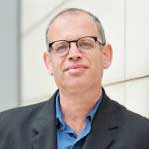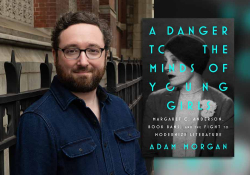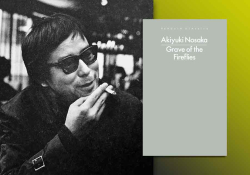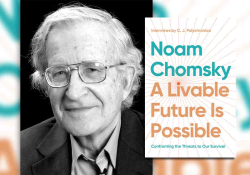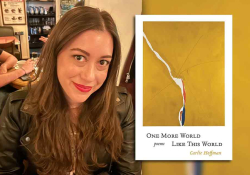Diaspora Israeli Culture Unbound: Melissa Weininger’s Beyond the Land
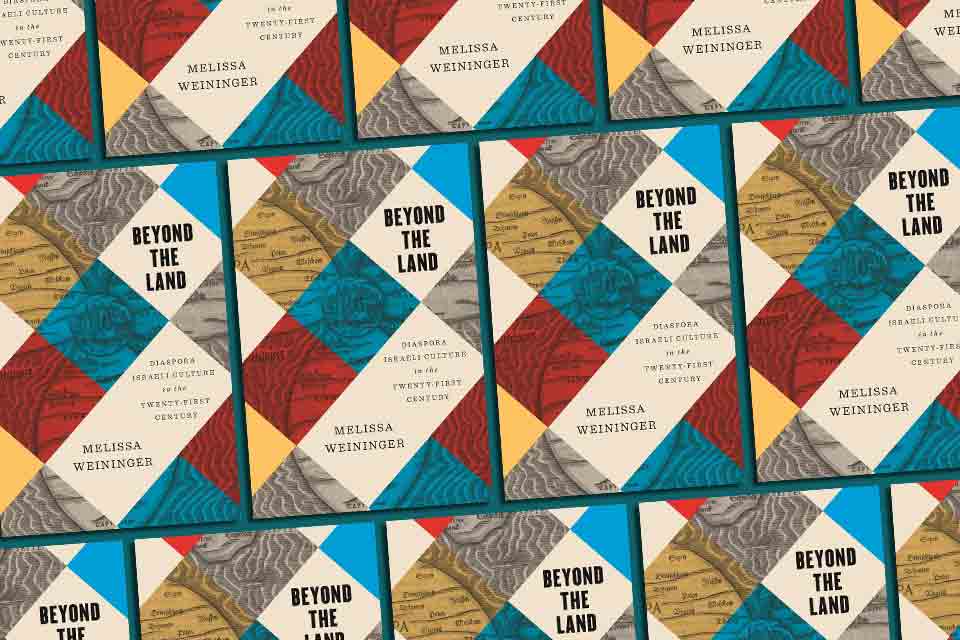
Melissa Weininger’s Beyond the Land: Diaspora Israeli Culture in the Twenty-First Century (Wayne State University Press, 2023) is a thought-provoking and hopeful book. Written during the Covid-19 pandemic and published just before October 7, 2023, it is a timely monograph that guides us through Jewish literature and art of the twenty-first century in Israel, America, and Europe. Reading it and thinking about it two years later in a particularly fraught and dark moment is an unsettling experience.
The book begins with Psalm 137, or rather with a satire of the biblical text that appeared in the Israeli TV comedy show Hayehudim Baim (The Jews Are Coming) in 2016. It is an apt starting point that provides the author with a distillation of the book’s analysis of both the problem and the power of exile that persists throughout Jewish culture to the degree that a popular TV show can evoke and poke fun at. The TV episode starts with a voiceover of these familiar words: “By the rivers of Babylon, there we sat, sat and wept, as we thought of Zion. There on the poplars we hung up our lyres, for our captors asked us there for songs, our tormentors, for amusement: ‘Sing us one of the songs of Zion.’”
As Sidra Dekoven Ezrahi argues, Psalm 137 is the canonical moment that generates the poetic vocabulary of exile. The redundant “there” in these verses calls attention to itself, defining exile as the place that is elsewhere. But being elsewhere becomes the pretext for poetry. Forced into song, the exiles’ response is an objection: “How can we sing a song of the Lord on alien soil?” However, the song of exile begins immediately after: “If I forget you, O Jerusalem, let my right-hand wither; let my tongue stick to my palate if I cease to think of you.” As Ezrahi explains, the botched writing-hand and singing-tongue are the signs of and the punishment for amnesia. Thus, writing and singing become a mnemonic compensation for the presence of territory, which is at the heart of diasporic poetics.
Being elsewhere becomes the pretext for poetry.
It is no wonder that the contemporary Israeli comedy imagines ancient Jews in Babylon talking about their desire to return to Jerusalem, but when a messenger informs them that “exile is over,” they make numerous excuses. As Weininger writes, they discover that “life isn’t so bad in Babylon” (2). What does this telescoping of textual history from 586 bce to 2016 teach us? Apparently, a great deal. If Ezrahi’s Booking Passage: Exile and Homecoming in the Modern Jewish Imagination (2000) captured the period between late nineteenth and the late twenty century, with the rise of Zionism, migration, the Holocaust, the State of Israel, and the American “Jewish Century,” Weininger’s book illuminates the contemporary moment in which she identifies a crucial shift in Jewish self-conception. What is the nature of this shift? Weininger describes the literature and art analyzed in her book as “diaspora Israeli culture.” As she explains, this seemingly clunky term is intentional, leading to a critical point that is embedded in the materials the book analyzes so incisively:
What is diaspora Israeli culture? Is it literature and art created by Israelis in the diaspora? Is it composed in Hebrew or in other languages? Is it work about the diaspora created in Israel? It is all of these things: an exploration of place, exile, home, language, nation, and nationalism undertaken by Israeli writers and artists living in both Israel and the diaspora, in Hebrew and diasporic vernaculars, about both diaspora life and Israel. (16)
The book does not provide a comprehensive guide to this new culture, but it moves deftly between various texts and cultural artifacts that encapsulate the shift Weininger identifies. The first chapter highlights three speculative novels written in Israel and England that imagine a realization of historical plans to establish a Jewish state, not in Palestine but elsewhere. In the case of Nava Semel’s 2005 Hebrew novel, E-srael (published in English as Isra Isle in 2016), the imagined reality is based on the 1825 plan advanced by Mordecai Manuel Noah to establish a Jewish homeland called Ararat on Grand Island, New York. Both Yoav Avni’s Hebrew novel Herzl Amar (2012; Herzl said) and Lavie Tidhar’s English novel Unholy Land (2018) imagine a Jewish state (called “Israel” or “Palestina”) roughly in the region proposed to the 1903 World Zionist Congress for settlement by the British colonial authorities in East Africa. Weininger shows that the alternative these novels narrate is not a utopia in the vein of Herzl’s novel Altneuland (1902). Instead, it occupies a liminal space between homeland and diaspora, indicating that the two are interdependent rather than oppositional.
Homeland and diaspora are interdependent rather than oppositional.
Chapter 2 considers two Hebrew books written in America: Ruby Namdar’s novel Habayit asher nekhrav (2013; Eng. The Ruined House, 2017) alongside Maya Arad’s novella Hamorah le’ivrit (2018; Eng. The Hebrew Teacher, 2024). Weininger reads these texts and the dialogue between them in the context of the history of Hebrew in the diaspora, and specifically in America. She shows how both create a linguistic pastiche composed of translations, citations, and borrowings from other languages, while presenting a vivid portrayal of Jewish diasporic life as fundamentally connected to—and even essential for—the existence of Israel, as well as of Israel and Hebrew as vital for world Jewish culture.
The third chapter focuses on Israeli literature written in English. Rela Mazali’s hybrid text, Maps of Women’s Goings and Stayings (2001) provides a framework for reading Shani Boianjiu’s The People of Forever Are Not Afraid (2012) and Ayelet Tsabari’s The Best Place on Earth (2013). Weininger’s analysis shows that these “translingual” (a term coined by Steven Kellman) texts offer new conceptions of Israeli culture that are unbound by geographic location and present a critique of Zionist ideology and Israeli social conventions, especially in relation to gender and ethnicity.
These “translingual” texts present a critique of Zionist ideology and Israeli social conventions.
The last two chapters examine the idea of “return” in contemporary Jewish culture, which is radically different from the “homecoming” of Zionist thought that imagined a political and secular “ingathering of exiles.” Chapter 4 zooms in on Yael Bartana’s video installation And Europe Will Be Stunned, which represented Poland in the Venice Biennale in 2011. It imagines a pioneering return of Israel’s settlers to Warsaw, Poland. Weininger demonstrates that the provocation of the artwork by Bartana—who grew up in Israel and currently lives in Berlin and Amsterdam—arises from its disquieting merging of ideologies: Israeli nationalism and Polish anti-Semitism.
This analysis of Bartana’s artwork reminded me of the great late sociologist Zygmunt Bauman, who was born in Poland in 1925, survived the Holocaust as a refugee, and returned to Poland after World War II until he was expelled from the Polish United Workers’ Party and his Warsaw University position during an anti-Semitic campaign in 1968. Bauman immigrated to Israel and lived and worked there briefly until 1971, when he moved to Leeds, England, where he became a world-famous public intellectual. Bauman wrote in 1989 that for diaspora Jews, “the State of Israel and all its works provide the reference point for present-day Jewish identity.” It became the “fate to which Jewish identity has given itself (or was given away) as a hostage. Like all fate, it cares little about the feelings of its hostages.”[i] Bauman could foresee the exact direction in which twenty-first-century “Israel diasporic culture” is moving, foreshadowing both Bartana’s artwork and Weininger’s book.
Chapter 5 provides an analysis of cultural activity of Israeli residents of Berlin, asserting that Israeli nationalism is confronted and combated by Hebrew creation in the diaspora, as writers, poets, and cultural activists declare their attempt to return Hebrew to a European center of Jewish modernism, detached from Israel as the cultural center of the language. One of the fascinating cultural innovations the chapter identifies is the “poetic hafla,” using an Arabic word for a party/celebration, which points to the aim to establish—in the very place that harbors memories of Nazi Germany—a space for collaboration that provides an environment for recognizing shared histories and languages, especially for Mizrahi Jews with roots in Arab countries.
Rereading Weininger’s book today made me realize that although it is the last chapter that shines light on Arabic and Arab Jews, the entire monograph cannot be understood without thinking about the entanglement of “diaspora Israeli culture” with contemporary Arab and particularly Palestinian culture. Each chapter of the book engages with Palestine and Palestinians in one way or another, and it made me wonder how it would look if it included a reading of the Hebrew and English texts of the Palestinian Israeli writers Anton Shammas and Sayed Kashua, who both immigrated to the United States later in life. Should we read them now as part of the Israeli diaspora or the Palestinian diaspora, or as part of both? To answer the question, one needs to examine Weininger’s book side by side with Maurice Ebileeni’s Being There, Being Here: Palestinian Writings in the World (2022). Ebileeni’s ambitious redefinition of Palestinian culture on a global scale beyond a national and linguistic framework includes a brilliant reading of Shammas and Kashua, alongside texts in Spanish, Italian, English, Danish, and other languages. Both books are about diaspora, homeland, and notions of return or “homecoming,” but more than anything else they are about imagination.
When considering Palestine/Israel as well as contemporary Jewish and Palestinian diasporas, the act of imagining is both fraught and essential: while it holds the potential to open up new possibilities and futures, it can also reinforce the existing political stalemate and divert attention from present atrocities, possibly leading toward even more perilous outcomes. This conclusion is surely less hopeful than some formulations proposed in Weininger’s book, but it explains better the world we currently inhabit.
University of Michigan
[i] Zygmunt Bauman, “The Homecoming of Unwelcome Strangers: East European Jewry 50 Years after the War,” Jewish Quarterly 36, no. 3 (1989): 14–23.
